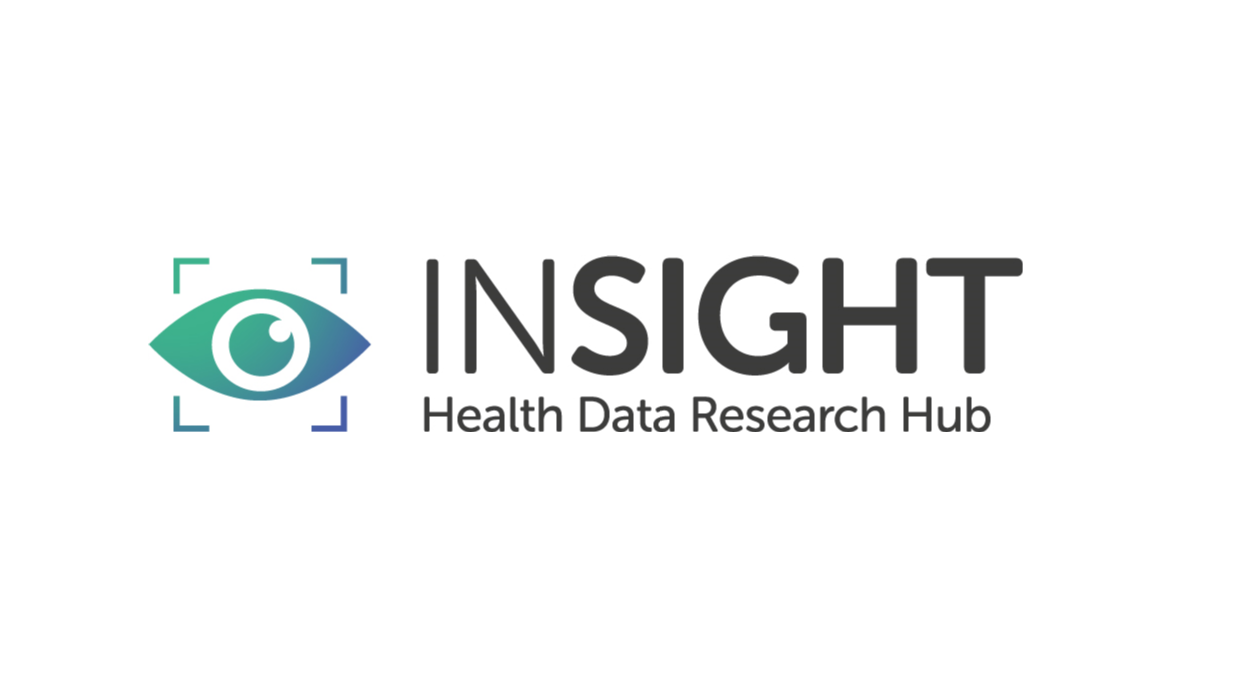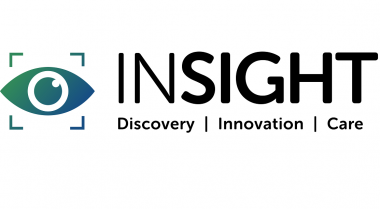INSIGHT eye hub - Small and medium-sized enterprises (SMEs)
22 August 2022
- In this case study, we outline how INSIGHT has actively engaged with SMEs by extending advice and expertise to encourage and propel their research ideas for data use, and how through broad networking we have adapted as a Hub by learning lessons from working with SMEs.
- INSIGHT has encouraged applications from multi-sector research users and has a particular interest in enabling the success of SMEs by meeting their need for efficient and safe access to high quality eye health data. The Hub extended advice and expertise that is bespoke to SMEs. This counsel incorporates an assessment of data requirements, providing access and help to support Data Use Applications, and working with SMEs leaders to translate understanding and ensure compliance with the ‘Five Safes’ criteria for data usage. Our work with SMEs has highlighted a range of areas and opportunities that differ from working with global industry, NHS, charity sector and academic research users, and the Hub continues to invest resource to refine our offering for the SME sector.
Engaging SMEs
- As the world’s largest ophthalmic bioresource, INSIGHT provides SMEs in the United Kingdom with an exceptional opportunity to develop and validate their product lines in preparedness for health settings and other commercial and/or regulatory applications. A key element of our engagement activity has been to attract SMEs from outside the eye health space, but with clear relevance to advancing machine learning and Artificial Intelligence (AI) development using eye data, including for systemic conditions. INSIGHT illustrates how eye health – with its high-volume diseases, standardised care pathways and reliance on protocolised imaging – is an attractive market for technology SMEs that are either established within health or could bring their AI development pipelines into the health sector. This is particularly salient to sector opportunity through ‘Oculomics’ where the eye is used as a window into systemic health, enabling technology SMEs to build innovative screening and diagnostic tools across a range of systemic health conditions, such as dementia and cardiovascular disease.
- Our SME engagement strategy has included leveraging our well-established networks (university business engagement, academic health science networks), while also reaching into new networks (through HDRUK and Innovate UK). We have contributed to virtual and in-person events ranging from ‘Catapult Network’ events to national data symposiums. Most recently, the Hub hosted a deep-dive event – the ‘INSIGHT Sandbox’ – inviting SMEs and other multisector research users to explore with us the potential of discovery data and learn about key themes such as Health Data Poverty and AI standards in health technology.
- Through our engagement, we have learned that working effectively with SMEs requires a differentiated approach to realising benefits and impact. Each SME faces unique operational circumstances and we have tailored our engagement to provide services and expert support to address these challenges. In our experience, SME applicants frequently have deep knowledge in their technology domain area or in general business acumen. However, they often have limited understanding of the clinical research domain, the governance of data (particularly NHS patient data) and contracting. The diversity of SME users has been striking, ranging from computer scientists with no prior commercial experience, to serial entrepreneurs. The feedback from delegates to our Sandbox event also highlighted challenges in sourcing reputable (trusted) data repositories.
- Our experience working with SMEs also revealed a relatively low conversion rate. From a multitude of enquiries from SMEs to INSIGHT since late 2020, three have moved beyond an expression of interest to submitting a Data Use application, and with the advice, guidance and expertise of Hub senior leaders, these applications are now under active negotiation and project delivery stage.
- Recognising the limitations and pressures on SMEs, we purposefully incorporated this learning into developing our ‘SME Playbook’ (created with contributions from the University of Birmingham Business Engagement Team) which was used during the Sandbox event to showcase market opportunities for the SME sector. We also provided a structured walkthrough of the Life Sciences sector in the UK alongside offering one-to-one networking sessions. Appendix A contains an infographic of INSIGHT’s Engagement Map with SMEs.
Enabling access for SMEs
Due diligence
- One of the differences between most SMEs and industry is that they are often newly created. The Hub is committed to supporting fledgling organisations (‘start-ups’) at this critical time in their development, whilst also ensuring due diligence with respect to safeguarding NHS patient data as a vital step in the process of the ‘Five Safes’ is ensuring ‘Safe people’. Industry players have a historical (often international) footprint providing ample evidence to conduct due diligence and provide assurance for INSIGHT and Data Controller purposes. In contrast, small companies often do not have an established operating or research track-record.
Defining the ‘use case’
- SME research users frequently approach the Hub with broad ideas, and we have found they need guidance to define a precise ‘use case’. For example, whether the proposed AI tool would be used in community screening or in a hospital clinic, or whether it could be deployed for decision support or operate fully autonomously. In contrast, research users from industry or large academic consortiums applying for grant funding usually have predefined expert internal review processes to hone research questions prior to a Data Use Application. Enquiries from SMEs have required significantly more input from INSIGHT senior staff in order to define and refine their project aims, so as to establish an admissible ‘use case’ and to design an appropriate data specification.

Defining the ‘ask’
- SME research users have tended to request large data sets without a clear determination of how many data points would be required to generate analytics for intended research purposes. Additionally, there has been a tendency to alter data discovery parameters at a late stage, even after the data specification has been finalised. We have observed that SME research users do not always recognise the value of data, for example, if their main comparators are free publicly available datasets or the UK Biobank. In contrast, industry research users have extensive experience of working with other data repositories coupled with a clear understanding of market value for licensing used to tailor their requests accordingly. Industry research users have demonstrated a clear idea of the numbers of images and data points that need to be acquired for successful analysis.
Organisational stability and navigating change
- SMEs are notably more agile with an ability to reach decisions faster than industry, but they are also more volatile. One SME underwent an unexpected change in Chief Executive during negotiations with the Data Controller regarding their Data Use Application, which resulted in several weeks of uncertainty as to whether negotiations would continue. On occasions, our engagement with nascent SMEs has uncovered creative research ideas that we recognise could result in exciting opportunities to address longstanding health and care challenges with positively disruptive solutions. For example, the Data Use Application to INSIGHT from an SME (micro) applicant uses AI analysis of routine retinal photographs to provide a high-street ‘wellness check’ to look for risk of heart disease, enabling early intervention. This ‘Oculomics’ application is a disruptive new technology that is unlike anything that is currently on the market.

Similarly, the Data Use Application from another SME applicant (micro) addresses the well-recognised problem of large-scale scale screening for diabetic retinopathy but uses an ‘explainable AI’ approach to provide both the advantages of automation alongside the ability for human readers to understand and verify the findings of the AI system.
Commercial arrangements
- SME applicants are more often significantly constrained in how they can fund access to data. In contrast to industry research users that prefer to define and pay for access via a one-off licence fee, SMEs have sought to defer expense to support cash flow and reduce risk. INSIGHT has worked with the Data Controllers and the applicants to develop financial models tailored for each SME that support their growth, but also demonstrate a fair-value return to the NHS. Options considered in negotiations have included revenue shares and equity stakes. Determining appropriate models of financial return and shared risk associated with data licensing to SMEs is complex and is an area of continued development. This requires time and detailed discussion with the SME to work out the most appropriate commercial relationship with the Data Controller.
Familiarity with patient and public involvement and engagement (PPIE)
- SME research users often have limited awareness or recognition of the importance and value of PPIE. INSIGHT has invested time with the SMEs introducing core principles and practice of PPIE, facilitating patient involvement so as to ensure the patient voice within their Data Use Application. This reflects how patients and public are involved in the leadership and governance of INSIGHT.
Impact and sustainability
- INSIGHT is committed to enabling SMEs to achieve their potential through efficient, safe access to data, alongside provision of world-class expertise in eye health, imaging, and AI. The Hub’s work with SMEs remains an integral part of INSIGHT’s mission to grow a multisector user base, recognising the special importance that these entities bring to serve exciting opportunities for innovation, growth and healthcare transformation across the UK and globally.
Appendix A:
INSIGHT’s Engagement Map with SMEs

Sites / Hubs
Selected work



